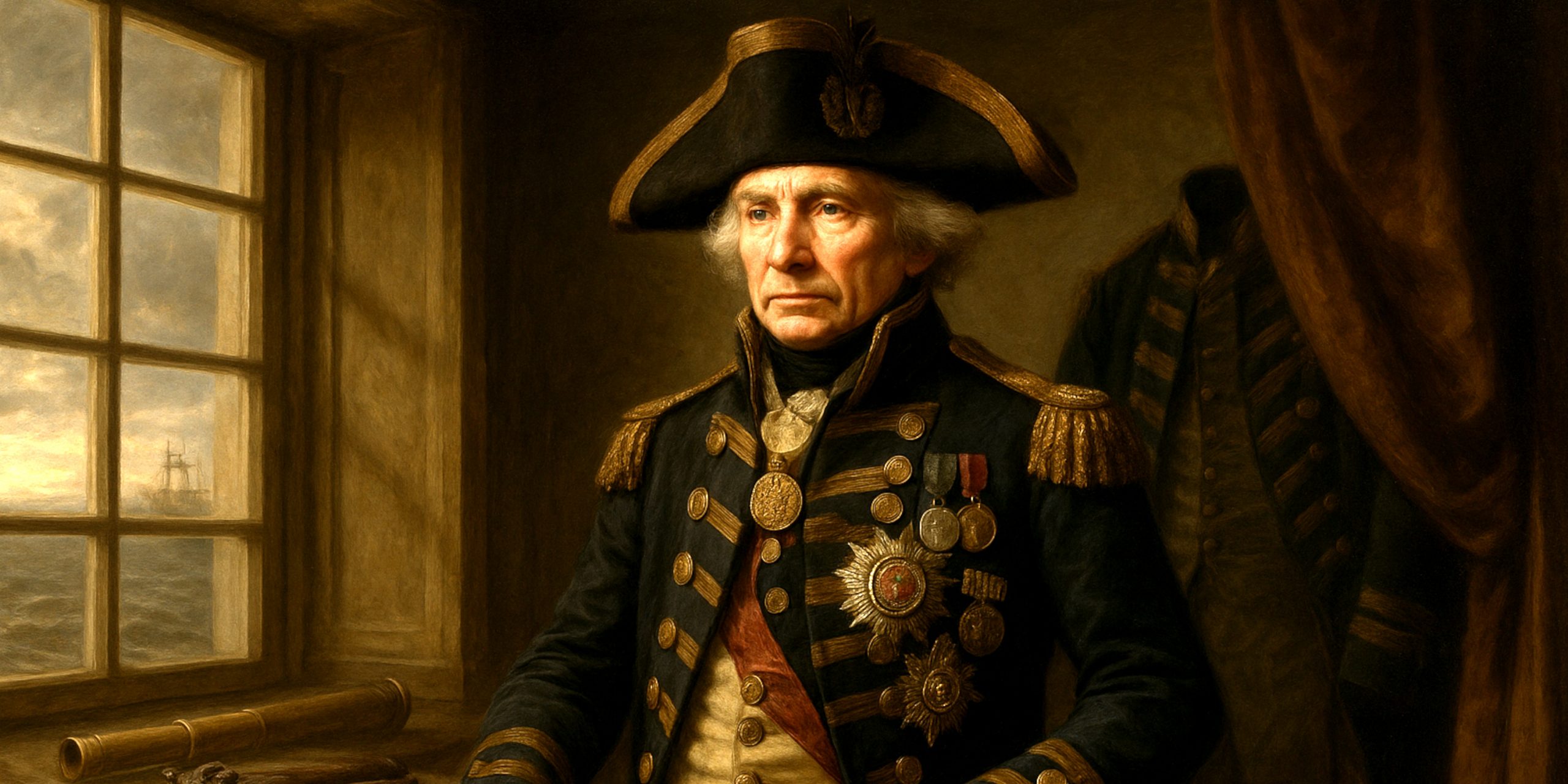
Horatio Nelson’s story still grips anyone who cares about how Britain shaped its naval identity. His triumphs are familiar, yet the texture of the man, that sharp mix of nerve, resolve and occasional fragility, rewards a closer look. What follows pulls together the full picture, with the sort of detail that tends to sit behind the glass cases and footnotes.
Arms And Armour
Nelson’s personal equipment reflected both standard Royal Navy practice and his habit of putting himself in the thick of the action.
His swords show a clear split between duty and ceremony.
- A curved fighting sword with a gilt brass stirrup hilt, built for slicing strikes in the short and smoky press of boarding.
- His Nile dress sword, with an ebony grip and modest decoration that hints at a preference for dignity rather than flash.
- A pair of plain pistols kept in his writing box, the sort of dependable weapons officers carried for the chaos of deck fighting.
His uniforms tell an equally frank story. The undress coat worn at Trafalgar still bears the hole punched by the French marksman. The cut is stiff through the chest, fitted high around the collar, made for presence. It also made him far too easy to spot, which he knew, and yet refused to alter.
Battles And Military Accumen
Nelson’s talent lay in his sense of timing. He had an instinct for spotting when convention would slow a victory and acted before others had fully grasped the moment.
At Cape St Vincent he broke out of the fleet line to strike the Spanish centre directly. The decision reads reckless on paper, yet he saw that clinging to signals would hand the initiative away. By boarding San Nicholas, then vaulting to San Josef, he turned a precarious situation into a breakout success.
The Nile was won on a similar instinct. Attacking at sunset ran against standard thinking, but the French anchoring left a gap on the shore side. Nelson drove his ships through that gap, crushing the French centre in darkness lit by burning masts.
Copenhagen showed his refusal to accept a stalemate. The Danish defences were brutal and Parker’s signal to withdraw was reasonable. Nelson ignored it, held his course and forced a negotiated victory.
Trafalgar was his final proof. Rather than fight parallel, he cut directly into the enemy line, creating pockets of close combat that played to British strengths. It was bold, deliberate and brutally effective.
Where To See Artifacts From His Reign
The National Maritime Museum at Greenwich holds the richest hoard. Nelson’s Trafalgar coat, dress swords and personal items fill the Nelson Gallery. The objects are arranged quietly, yet the emotional weight remains sharp.
The Royal Navy Museum in Portsmouth offers relics from HMS Victory, including parts of the deck where Nelson fell. Walking through Victory is surprisingly intimate. The low light, cramped passageways and creaking timbers give a closer sense of command at sea than any painting.
Smaller museums across Britain hold portraits, snuff boxes, lockets and surviving letters. These smaller things help soften the myth and show the man who fretted, teased, and sometimes contradicted himself in unexpected ways.
Latest Archaeology And Research
Conservation work on HMS Victory continues to reveal details of how the ship behaved under battle strain. Modern imaging has shown stress points in the hull that match eyewitness accounts from Trafalgar.
Detailed textile studies on naval uniforms have shed light on how officers tailored their coats for freedom of movement. Stitch repairs in Nelson’s surviving garments show where seams were strengthened before campaign service.
Archival research has also uncovered correspondence that paints a more grounded picture of Nelson’s influence. Rather than the lone genius of patriotic portraits, he worked within a network of captains who trusted him, challenged him and sometimes steered him. His real strength was turning that collective skill into decisive action at sea.
Seven Swords Takeaway
Nelson invites admiration, but the danger is letting the silhouette swallow the person. He could be generous and irritable, ambitious and sentimental. He wanted glory, yet he also wanted to be understood.
The items he left behind, from worn sword grips to the tiny repairs on a coat, bring him closer than the heroic paintings. They show a man preparing himself for action with care and intention. That is the Nelson I find most compelling, the human one who faced danger with clear eyes and shaped the course of naval history by choices made in minutes rather than hours.
Watch the documentary:



